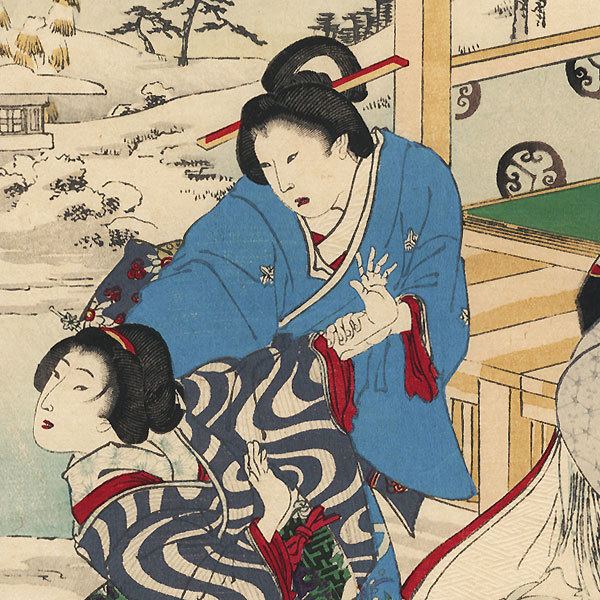Resting place Seirai'in Temple Name Lady Tsukiyama | Role Consort | |
 | ||
Relatives Imagawa clanTokugawa clan Similar People | ||
Lady Tsukiyama or Tsukiyama-dono (築山殿) (d. 1579) was the wife and chief consort of Tokugawa Ieyasu, the founder and first shogun of the Tokugawa shogunate. She was the mother of Ieyasu's eldest son and heir apparent, Matsudaira Nobuyasu.
Life
Lady Tsukiyama was the daughter of an Imagawa retainer, Sekiguchi Chikanaga. Her mother was Imagawa Yoshimoto's former concubine and daughter of Ii Naohira. She was also known as Sena (瀬名) before she married Tokugawa Ieyasu.
In January 1557, Lady Tsukiyama married Tokugawa Ieyasu. The marriage was arranged by her Imagawa Yoshimoto, ostensibly to help cement ties between the Imagawa clan and the Tokugawa clan, respectively. Two years later, on 13 March 1559, she gave birth to his eldest son, Matsudaira Nobuyasu. In 1560, she gave birth to a daughter, Kamehime.
Tsukiyama was erratic by nature, and was completely indifferent to affairs of state. Nothing entered her mind other than her own daily life and the attentions of her husband. She was jealously devoted to her husband, but she could be selfish in her motives and blind to consequences.
When Ieyasu moved to Hamamatsu in 1570, he left Lady Tsukiyama and their eldest son at Okazaki Castle. During this time, he had started an affair with Lady Saigō. In 1573, one of Tsukiyama's maid servants, Oman, became pregnant by Ieyasu. Oman bore him a son, Hideyasu, though Ieyasu was slow to claim lest it anger his wife.
Because Nobuyasu had no sons by his wife Tokuhime, a daughter of Oda Nobunaga, Lady Tsukiyama decided to procure a daughter of a Takeda retainer for her son's concubine. Seeing this and all of the conflicts that her mother-in-law made against her, Tokuhime sent a letter to her father, telling him that Lady Tsukiyama was conspiring with the Takeda clan against the Oda clan. Oda Nobunaga informed Ieyasu of this letter, and as a show of good faith and loyalty, and to preserve the Oda-Tokugawa alliance, Ieyasu ordered his wife executed, and Nobuyasu imprisoned due to his closeness with his mother.
On 9 September 1579, Lady Tsukiyama was beheaded on the shore of Lake Sanaru, in Hamamatsu. Her primary grave is at Seiryū temple (清流寺) in Tenryu ward, Hamamatsu. Her head was sent to Okazaki and interred at Yūden temple (祐傳寺); during the Tenpō era (1830–1844) it was transferred to Hachioji Shrine (八王子神社).
Knowing his eldest son would feel obligated to avenge his late mother's death, Ieyasu eventually ordered Nobuyasu, who was confined at Futamata Castle (now Tenryū Ward, Hamamatsu), to commit suicide (seppuku) on 5 October 1579. Her buddhist name is Shoge-in.
